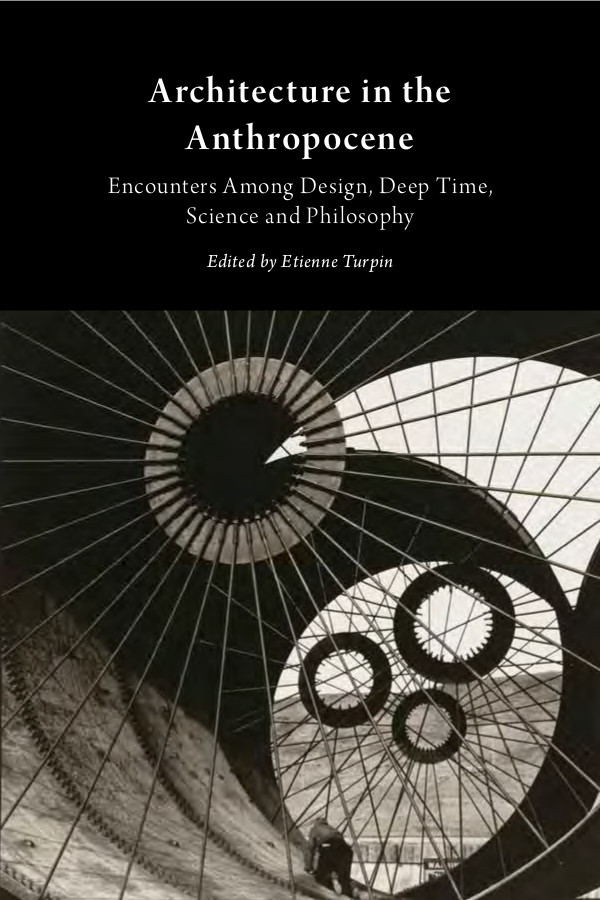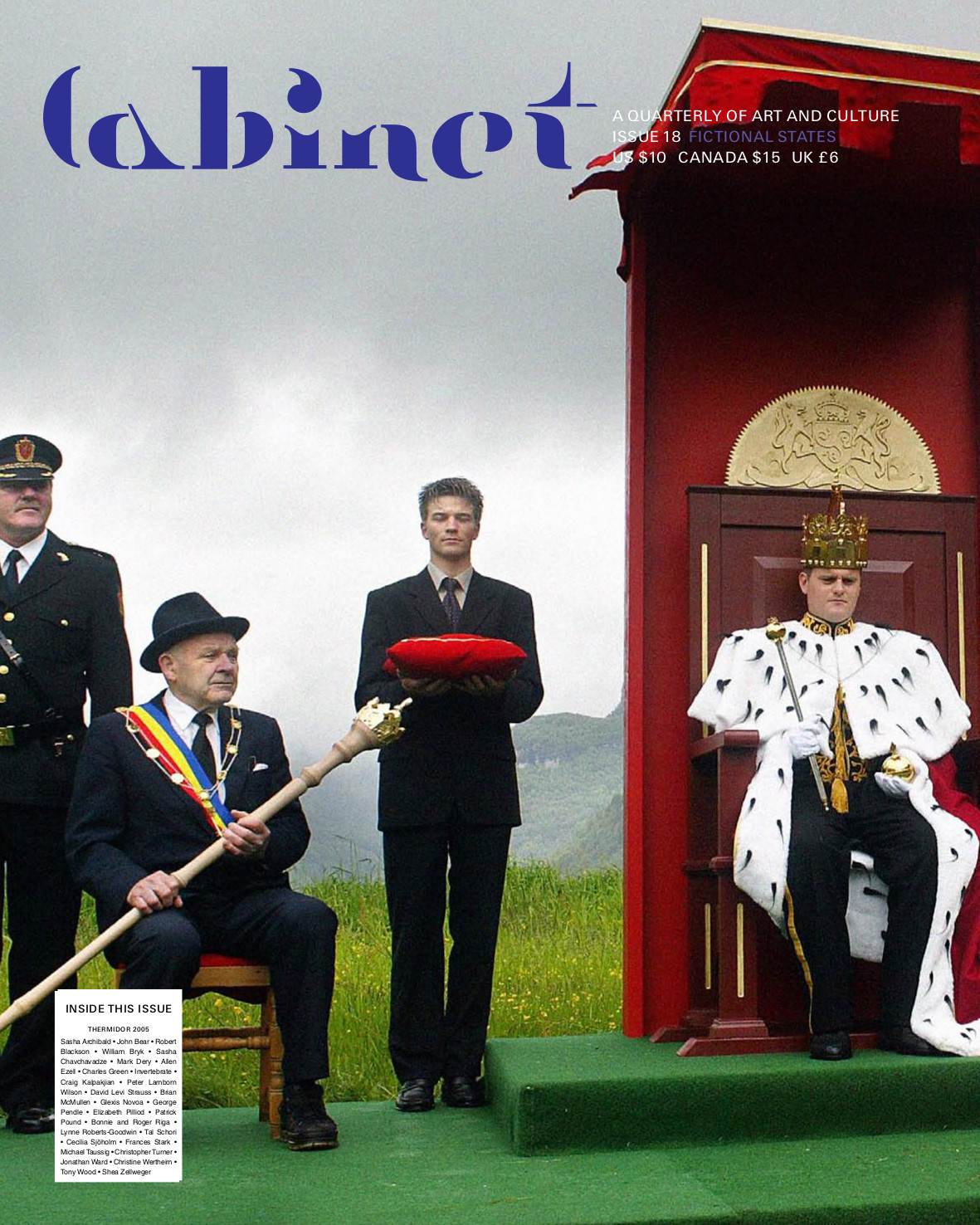Etienne Turpin (ed.): Architecture in the Anthropocene: Encounters Among Design, Deep Time, Science and Philosophy (2013)
Filed under book | Tags: · anthropocene, architecture, climate, climate crisis, design, earth, ecology, geology, meteorology, philosophy, science, time, weather

“Research regarding the significance and consequence of anthropogenic transformations of the earth’s land, oceans, biosphere and climate have demonstrated that, from a wide variety of perspectives, it is very likely that humans have initiated a new geological epoch, their own. First labeled the Anthropocene by the chemist Paul Crutzen, the consideration of the merits of the Anthropocene thesis by the International Commission on Stratigraphy and the International Union of Geological Sciences has also garnered the attention of philosophers, historians, and legal scholars, as well as an increasing number of researchers from a range of scientific backgrounds. Architecture in the Anthropocene: Encounters Among Design, Deep Time, Science and Philosophy intensifies the potential of this multidisciplinary discourse by bringing together essays, conversations, and design proposals that respond to the “geological imperative” for contemporary architecture scholarship and practice.”
Contributors include Nabil Ahmed, Meghan Archer, Adam Bobbette, Emily Cheng, Heather Davis, Sara Dean, Seth Denizen, Mark Dorrian, Elizabeth Grosz, Lisa Hirmer, Jane Hutton, Eleanor Kaufman, Amy Catania Kulper, Clinton Langevin, Michael C.C. Lin, Amy Norris, John Palmesino, Chester Rennie, François Roche, Ann-Sofi Rönnskog, Isabelle Stengers, Paulo Tavares, Etienne Turpin, Eyal Weizman, Jane Wolff, Guy Zimmerman.
Publisher Open Humanities Press, December 2013
Critical Climate Change series
Creative Commons Attribution Non-Commercial No-Derivatives 3.0 Licence
ISBN 1607853078, 9781607853077
250 pages
HTML (added on 2016-7-19)
PDF, PDF, PDF (10 MB, updated on 2016-7-19)
Paul N. Edwards: A Vast Machine: Computer Models, Climate Data, and the Politics of Global Warming (2010)
Filed under book | Tags: · climate, climate crisis, computing, data, global warming, meteorology, politics, science, weather

“Global warming skeptics often fall back on the argument that the scientific case for global warming is all model predictions, nothing but simulation; they warn us that we need to wait for real data, “sound science.” In A Vast Machine Paul Edwards has news for these doubters: without models, there are no data. Today, no collection of signals or observations–even from satellites, which can “see” the whole planet with a single instrument–becomes global in time and space without passing through a series of data models. Everything we know about the world’s climate we know through models. Edwards offers an engaging and innovative history of how scientists learned to understand the atmosphere–to measure it, trace its past, and model its future.
Edwards argues that all our knowledge about climate change comes from three kinds of computer models: simulation models of weather and climate; reanalysis models, which recreate climate history from historical weather data; and data models, used to combine and adjust measurements from many different sources. Meteorology creates knowledge through an infrastructure (weather stations and other data platforms) that covers the whole world, making global data. This infrastructure generates information so vast in quantity and so diverse in quality and form that it can be understood only by computer analysis–making data global. Edwards describes the science behind the scientific consensus on climate change, arguing that over the years data and models have converged to create a stable, reliable, and trustworthy basis for the reality of global warming.”
Publisher MIT Press, 2010
Infrastructures Series
ISBN 0262013924, 9780262013925
xxvii+518 pages
Reviews: Noel Castree (American Scientist, 2010), Ronald E. Doel (American Historical Review, 2011), Myles Allen (Nature, 2010), Richard C.J. Somerville (Science, 2011), Gabriele Gramelsberger (Minerva, 2012), McKenzie Wark (White Review, 2014).
PDF, PDF (updated on 2018-11-4)
Companion website (added on 2018-11-4)
Cabinet (2000–)
Filed under magazine | Tags: · animal, art, chance, culture, design, dust, electricity, evil, friendship, history, language, literature, magic, mapping, nature, property, science, underground, weather


“Cabinet is a quarterly, Brooklyn, New York-based, non-profit art & culture periodical launched in 2000. Cabinet also operates an event and exhibition space in Brooklyn.
Cabinet is an award-winning quarterly magazine of art and culture that confounds expectations of what is typically meant by the words “art,” “culture,” and sometimes even “magazine.” Like the 17th-century cabinet of curiosities to which its name alludes, Cabinet is as interested in the margins of culture as its center. Presenting wide-ranging, multi-disciplinary content in each issue through the varied formats of regular columns, essays, interviews, and special artist projects, Cabinet‘s hybrid sensibility merges the popular appeal of an arts periodical, the visually engaging style of a design magazine, and the in-depth exploration of a scholarly journal. Playful and serious, exuberant and committed, Cabinet‘s omnivorous appetite for understanding the world makes each of its issues a valuable sourcebook of ideas for a wide range of readers, from artists and designers to scientists and historians. In an age of increasing specialization, Cabinet looks to previous models of the well-rounded thinker to forge a new type of magazine for the intellectually curious reader of the future.”
Cabinet is a non-profit organization. Consider supporting it by subscribing to the magazine, buying a limited edition artwork, or making a tax-deductible donation.
HTML (sold-out issues as HTML articles; click on the covers; updated on 2013-10-10; the download links were removed)
Comments (6)
